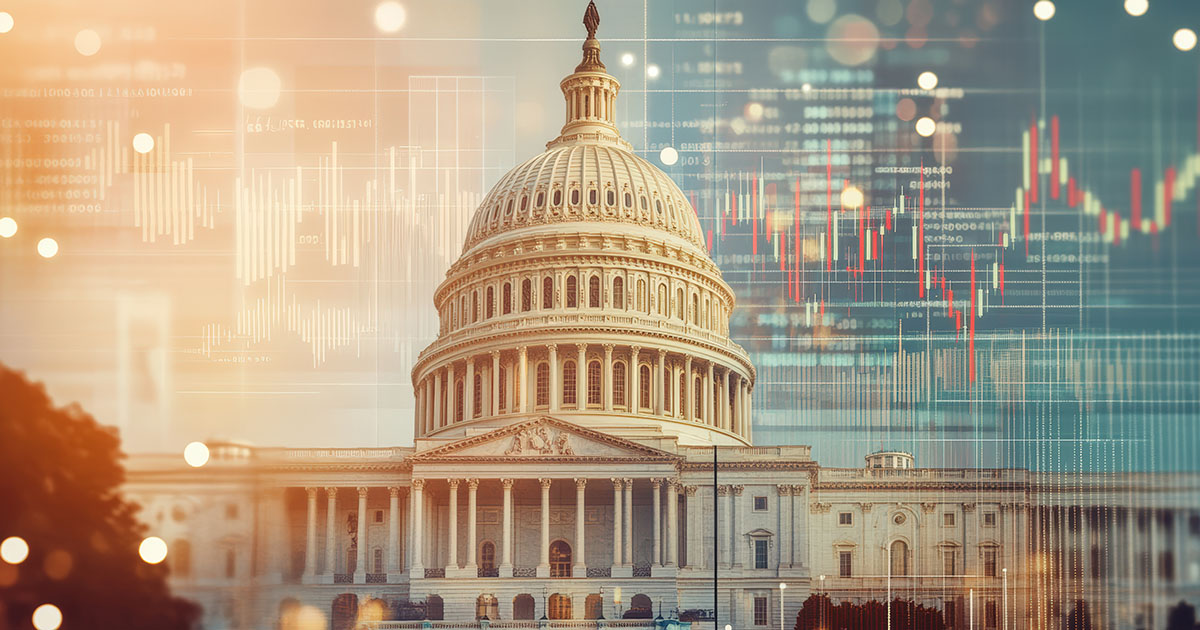What Makes an Economy Healthy? A Babson Professor Decodes the Top Indicators and What They Miss

With ongoing changes in tariffs and a volatile stock market, the economy has been a hot topic. Every news cycle brings updates on gross domestic product (GDP) growth, inflation rates, or the latest job reports.
But what do these numbers actually mean? And how can we tell if the U.S. economy is thriving or struggling?
Babson Associate Professor Joshua Stillwagon, who also chairs Babson’s Economics Division, shares his insights into the major indicators used to gauge economic health, their limitations, and alternative measures that provide a more comprehensive view.
What are the most fundamental indicators economists use to determine the health of an economy?
“GDP, inflation, and the jobs report, which details unemployment and jobs gained or lost, are kind of the ‘big three’ macro announcements that may elicit large market movements, especially if there is a surprise that differs from what was expected.”
Why are these particular indicators considered essential in assessing economic well-being?
“GDP is a measure of our income and production. This is our key gauge of overall economic activity. Consumer spending represents about two-thirds of GDP in the U.S., so this is a crucial component.
“Meanwhile, the labor market conditions, of course, reflect the amount of employment and hiring, but also have major spillovers to wage growth, inflation, and the Federal Reserve’s interest rate decisions.”
Are there any common misconceptions or limitations when relying on these indicators to evaluate the economy?
“Definitely. In an increasingly divided economy, with 50% of consumption coming from the top 10%, GDP growth could be relatively strong while the middle class struggles. Measures like real median household income or real wages provide a more representative indication of middle-class financial well-being.
“For unemployment, a common criticism is the standard rate leaves out discouraged workers who have stopped looking for work or those who are working part time because they can’t find a full-time job. The Bureau of Labor Statistics, however, publishes another rate including those additional factors. In practice, both sets of numbers tell similar stories about labor market improvement.
“A more crucial and less recognized distinction is to watch the duration of unemployment, as long-term unemployment can indicate deeper economic challenges even when overall joblessness appears low. This has been an increasing problem in recent decades.
“When it comes to inflation, I focus on core or trimmed measures, which exclude volatile prices like food and energy to get a clearer trend. While food and energy prices matter greatly for households, they fluctuate often. Core inflation is a better predictor of trends over the next year or two.
“Our modern consumer price index (CPI) measures are also a bit deficient in how they capture costs for financed goods like housing and autos. Today, we use rental equivalent for housing. This didn’t matter much the last few decades, but post-COVID there was a real estate boom and the initial inflation wave was really driven by autos from the chip shortage. Combined with the later surge in interest rates, monthly mortgage and car loan payments have soared. Inflation measures that captured that better explained the low consumer sentiment we have seen post-COVID.”
Is the stock market a good indicator of U.S. economic health?
“As Nobel Laureate Paul Samuelson famously joked, ‘The stock market predicted nine of the last five recessions,’ meaning it is prone to false positives where the market crashes without a subsequent economic downturn. Conversely, recessions do reliably see significant stock market crashes before official data confirms that we are in a recession.
“The stock market partially reflects sentiment, much like survey-based measures, which have also plunged recently in the face of the ongoing trade war. This isn’t to say that markets are all psychology or ‘vibes’ though, as markets are ultimately tethered to company earnings and wealth-to-consumption ratios.
“With that said, markets are susceptible to speculative bubbles. Recent high price-to-earnings ratios indicate that the market valuations are built on optimistic expectations for future growth, making it more vulnerable to sudden reversals.
“There’s also a feedback loop between markets and the economy. When stock values rise, people feel wealthier and may spend more, boosting the economy. Conversely, market declines can lead to reduced consumer confidence and spending, potentially slowing economic growth. This correlation highlights the importance of monitoring financial markets, not just as an indicator of economic sentiment but as a force that can shape economic outcomes.”
Posted in Insights






